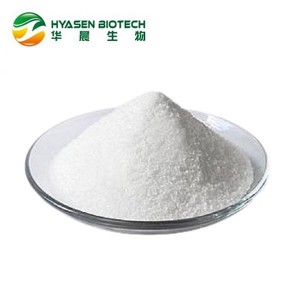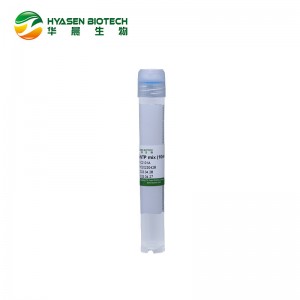
Test Kit for Residual Protein A
This assay kit is used to detect residual Protein A in antibodies and Fc-fusion proteins. The principle of this assay kit is based on a sandwich immunoassay, utilizing an acidic buffer to dilute the sample and effectively separate residual Protein A from the sample’s Fc portion through simple steps.
Detection Principle
The provided assay plate in the kit is pre-coated with1anti-Protein A mAb. The acid-diluted series of Protein A standards and samples are directly added to the pre-coated assay plate. After incubation at room temperature with shaking for 1 hour, unbound substances are washed away, resulting in the formation of a “coated antibody-Protein A” complex on the assay plate. Subsequently, biotinylated anti-Protein A detection antibodies are added, forming a “coated antibody-Protein A-biotinylated detection antibody” complex. After incubation at room temperature for 1 hour, unbound substances are washed away. Then, streptavidin-horseradish peroxidase (SA-HRP) complex is added and incubated at room temperature for 20 minutes, resulting in the formation of a “coated antibody-Protein A-biotinylated detection antibody-SA-HRP” complex on the assay plate. After washing away unbound substances, TMB substrate is added. The enzyme-catalyzed reaction of the substrate on the solid phase generates a color reaction. After approximately 6 minutes of color development, the reaction is terminated. The results are measured using an ELISA reader at wavelengths of 450nm, with 650 nm as the reference wavelength. The results are calculated using the difference between OD450nm and OD650nm, which indirectly reflects the amount of Protein A bound to the assay plate. The residual amount of Protein A in antibodies and Fc-fusion proteins can be quantitatively analyzed based on the standard curve.
Kit Features
(1) The coated and detection antibodies are both mAbs produced from monoclonal cell lines. They are purified using a two-step column chromatography process, ensuring batch-to batch consistency and sustainable supply of the assay kit. The Fc regions and framework regions of both antibodies do not bind to Protein A, ensuring the scientific validity of the assay kit’s design principle.
(2) The kit is equipped with a universal Protein A ligand. When this ligand is used as a standard, it has been validated to show good recovery rates for various other ligands in actual samples, demonstrating the kit’s versatility for multiple imported and domestic Protein A ligands.
Additionally, the kit includes four commonly used imported and three domestic Protein A ligands commonly applied in the industry. Users can choose the corresponding ligand as a standard for testing according to their needs.
(3) The experimental procedure is simple, requiring only sample dilution and direct addition to the plate. It does not involve complex steps such as heating, denaturation, centrifugation, or pre-incubation before sample dilution and addition to plate. The entire experimental operation
takes approximately 3 hours.
(4) The kit offers high sensitivity compared to other similar products. The lowest point at the standard curve serves as the quantitation limit (10 pg/mL). The low quantitation limit ensures that users have a high degree of flexibility and selectivity in experimental design. Depending on the
actual residual amount of Protein A in the test sample, the sample can be diluted to 1-0.01 mg/mL, corresponding to a final quantitation limit of 0.01-1 ppm. The ratio of OD between 10 pg/mL and 0 pg/mL on the standard curve is approximately 2-5 times and even more, ensuring the stability and accuracy of experimental measurement data when the Protein A content in the sample is near the quantitation limit. It is important to note that the quantitation limit refers to the quantitation limit in a specific sample with a specific protocol. The quantitation limit of the kit is obtained through methodological validation on representative samples. When applying this kit, users should not directly adopt the quantitation limit of 10 pg/mL but should develop a methodological validation plan based on their own sample characteristics and needs of specification, and set a reasonable quantitation limit according to the results of the methodological validation.
(5) The kit has undergone comprehensive and relatively rigorous methodological validation according to the latest version of ICH-Q2 (R2). It has been validated for accuracy, precision, linearity, quantitation limit, specificity, and other parameters, meeting regulatory requirements for residual Protein A detection in antibodies and Fc-fusion protein drugs in various countries. The kit comes with a recommended validation protocol, but users can also design their own validation plan according to their specific needs.
(6) The kit demonstrates good stability. After being stored at 37℃ for 1 months, there are no significant changes in performance. Long-term stability assessment at room temperature is currently underway. Currently, the kit supports transportation at room temperature, but it is still
recommended to store the kit at 2-8℃ for long-term storage.
related products
Write your message here and send it to us















